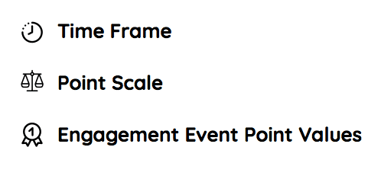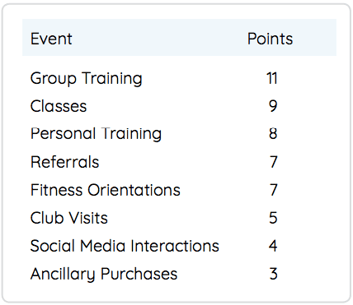
High member churn is a perennial problem in the fitness industry. The old enemy of fitness center and studio owners and operators everywhere. Attrition rates for new members are often bleak, to say the least. On average, 80% of new memberships are terminated by eight months (MobileFIT). This attrition rate is like going to the well with a hole in your bucket. You’re constantly having to go back to the well to try and fill it, only to lose most of what you got. Aggressive turnover rates drain even the best fitness businesses preventing long-term growth.
You have to patch the hole in your bucket before you can truly grow revenue and improve your growth rate. This starts with retention. The best way to boost retention rates is through engagement. By and large, members are looking for a community. A place where they feel they belong and a place they believe in. Now, this isn’t a hard and fast rule. Some people have very full plates between work, family, and extracurricular hobbies. Those people aside, the more engaged a member is with your club, the higher the likelihood they’ll renew their membership.
“Increasing customer retention rates by 5% increases profits by 25% to 95%.” - Harvard Business Review.
We can all agree: we want engaged members. Sure, that’s the simple part. The head scratching starts when you ask yourself, how do I measure an individual member’s engagement level? What distinguishes a highly-engaged member from one who has little-to-no connection to your fitness center or studio? There are two important steps you need to take to be able to quantify your member engagement:
1.) Identifying "engagement events" that are a part of your fitness center or studio
2.) Learning to calculate an overall engagement score from these type of events
What is an Engagement Event?
Calculating engagement starts with engagement events. This is a broad term to describe a variety of interactions a member can have with your fitness center or studio. Engagement events can include attending a class, referring a friend, buying branded merchandise, or just checking in for a solid workout. Every time a member completes an engagement event they increase their connection and relationship with your club.
“Engagement equals interaction. An engaged customer visits your business, buys, and tells friends about the experience.” - MINDBODY
What type of Engagement Events Does Your Club Offer?
There is no set list of engagement events that fits every fitness business. Qualifying engagement events are dependent on the services, amenities, and the business model of your club. The first step in quantifying your members’ engagement is making a list of engagement events offered by your fitness center or studio.
Let's define common engagement events, and why they drive interaction. Engagement events will be listed in order of greatest impact.
A. Group Training
Training services offered by a qualified trainer and designed for a group of exercisers. Group training (GT) carries a high-level of engagement value for three important reasons: 1.) The group setting adds increased accountability for individual members to show up and participate 2.) Unlike classes, group training is not complimentary with membership dues. Members make a financial investment in GT and are therefore more likely to attend regularly. 3.) It’s social, giving members an excellent way to build a community.
“The risk of cancellation was 56% higher among members who just use gym equipment vs. those who exercise in groups,” as reported by IHRSA.
B. Classes
Group fitness classes offered as a complimentary service with a member’s monthly club dues. Classes drive engagement because they’re community based and increase accountability for an individual member.
C. Personal Training
A training package purchased by a member and led by a private trainer. Personal training drives engagement because it gives the member a one-on-one relationship with a team member of your fitness center or studio.
D. Referrals
A new lead recommended by a current member. Referrals carry engagement value because they attest to a member’s loyalty to your club. The member values their experience with your club so much they want to advocate for it to others. When a member refers friends or family, they’re building their community within your fitness center or studio.
E. Fitness Orientations
A free trainer assessment offered to new members. Fitness orientations carry engagement value for two important reasons: 1.) They give club trainers an introduction to new members, which quickly builds an early relationship 2.) Trainers have an opportunity to demonstrate and pitch their personal training services. This only deepens a member’s engagement as they purchase additional services.
F. Club Visits
A documented check-in by a member to your fitness center or studio. Club visits carry engagement value because attendance and retention are linked. Higher visitation rates lead to higher chance of renewal. It’s important to note, if a member checks into your club to complete a separate engagement event such as a personal training session, you should not credit the club visit. That would result in double scoring and give you a false read of the member’s engagement level.
“Members who visit less than once a week in the first month of membership rejoin 59% of the time. Those who visit at least three times a week in the first month of membership rejoin 78% of the time.” - ptdirect.com
G. Social Media Interactions
This is across all social platforms and could include retweeting, commenting, following, subscribing, or posting about their positive experience with your fitness center. Social media interactions carry engagement value because it’s your members interacting with your brand outside of the club walls.
H. Ancillary Purchases
Purchases of secondary services and products offered by your fitness center or studio. Ancillary purchases carry engagement value because they diversify your member’s relationship with your club. It becomes the place they workout but also source nutritional products, workout gear, or maybe just a tasty smoothie.
How To Score Overall Engagement
Once you understand what engagement events your club offers, there are three main parts to calculating an engagement score.

1.) Time Frame
First, you need to define a time frame. Only engagement events within these parameters will be sourced and scored. The most common time frame is the previous 30 days. However, time frame is dependent on what kind of information you’re trying to uncover. Short time frames like 30 days are perfect for getting a snapshot of your member's engagement, but if you want to understand something larger like the typical drop-off point of new members, you’ll require a much longer time frame, such as 90 days or longer. Not to mention, a lot more members in your testing pool.
2.) Point Scale
A 100 point scale is the most practical choice, especially for a 30-day time frame. It’s universally understood, having common place use throughout our society. More importantly, it’s a wide enough range that you can divide members into engagement-level classifications for a more nuanced understanding of where they fall in terms of overall engagement trends. An example of engagement levels is below:
- 0-39 Low Engagement
- 40-84 Medium Engagement
- 85-100 High Engagement
3.) Point Value
Each of your fitness center or studio's eligible engagement events should be assigned a point value. The member will earn the assigned point value each time they complete the given engagement event during the designated time frame. Engagement events that carry higher importance to overall engagement, like group training, should be given higher point values, while more common events, like club visits, should be worth smaller point values. Below is an example point value chart based on a 100 point scale over a 30-day period.

Let Us Do The Math For You!
To simplify the math, Club OS created an engagement calculator based on the above specification. Download this free resource to begin calculating your member’s engagement levels and watch your business thrive!
Note: Engagement calculator defaults as an Excel file. However, you can also import the file into Google Sheets.
